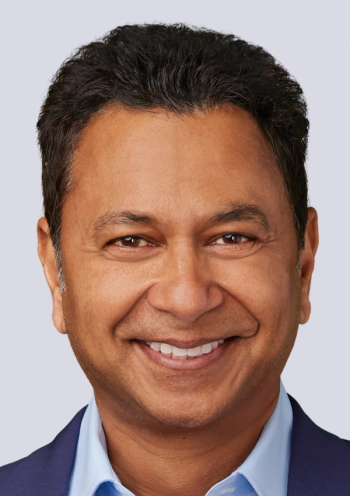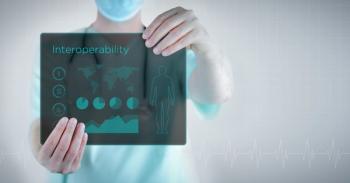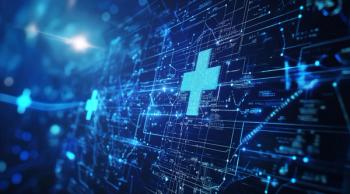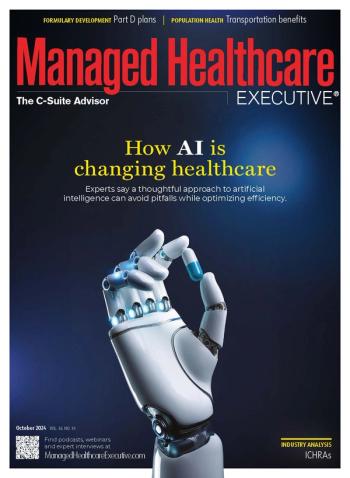
E-health, your workforce and you: The future is already here
Contemplating the health care applications of the Internet can leave you breathless with possibility. All of these ?killer apps? are technologically feasible or actually operative.
E-health, your workforce and you
The future is already here
Contemplating the health care applications of the Internet can leave you breathless with possibility. All of these "killer apps" are technologically feasible or actually operative.
By Robert McCarthy
The house call is of course dead, but might the office visit become a relic as well? The technology is already here. Imagine a television set equipped with a video camera. The video equipment links at-risk patients with physician offices. Other devices digitally record and store symptomatic information relevant to diseases like asthma and diabetes. The patient performs a blood glucose test or uses a peak-flow meter to measure airway capacity. The readings are stored in the device, which is plugged into a computer with Internet access, then downloaded to a central processor that stores medical histories and treatment algorithms.
Patient readings are analyzed. Perhaps the diabetic's blood sugar level has spiked. The disease algorithm recognizes a potential problem, compares the current reading with past results and recognizes a pattern of spikes. The software "understands" this is a concern and notifies both patient and physician by e-mail. If the problem looks more serious, the software might generate two phone calls, instructing patient and physician to contact each other. At this point the two-way video comes into play. Doctor and patient can interact without an office visitand before a medical emergency arises.
Science fiction? Nope. There's already a device called "Health Buddy," made by a Mountain View, Calif.-based com-pany called Health Hero Network. It's a terminal connected by phone lines to a central server. Every day, even several times a day, the Health Buddy flashes a series of questions: "How are you feeling?" "Have you taken your medicine?" Responses are downloaded to the Health Hero Network, where case managers assess the data and implement interventions as needed.
And this is just the tip of what's happening in e-health. Consider as well:
The office visit, virtually revived: Net meeting software and audiovisual teleconferencing are being used to monitor elderly stroke victims. Wireless sensor devices measure vital signs, including brain-wave activity, and data are transmitted to a central processor for evaluation.
Panasonic in Secaucus, N.J., is developing the "Tele-Homecare System," which comprises three devices: the Patient Terminal, the Active Server and the Doctor Terminal. The Patient Terminal measures vital signs with a thermometer, blood pressure cuff/pulse taker, blood sugar monitor, oxygen saturation sensor, stethoscope and an electrocardiographic device. It also has an interactive touch screen, a video camera and a voice/picture navigation system. The terminal's alert functions remind patients of scheduled measurements of vital signs. The Active Server connects the Patient Terminal to the Doctor Terminal, where the provider can check stored patient data. The system notifies the physician or nurse if vital signs are abnormal. The provider can communicate directly with the patient through the Doctor Terminal's videophone system or e-mail advice and information.
Virtual communities, created: Medical information sites are rapidly adding interactivity applications, offering forums where patients with the same interests or conditions can read each others' postings or participate in chat rooms and on-line symposia. Members of the virtual community can share information and experiences, learn from and support one another. A First Consulting Group report (Where Will the Road to e-Health Lead?) claims that some of these communities have even begun to sponsor outcomes research on their conditions.
Actual communities, wired: You remember the CHINs (Community Health Information Networks). They were supposed to link up providers, plans, hospitals, pharmacies and patients in ways that would make health care delivery more effective and communities healthier. CHINs never really fulfilled their promise, perhaps because the linkages were never robust enough. Winona, Minn., is betting the Internet has solved that problem. Under the aegis of the town's hospital, Community Memorial, Winona Health Online is setting up medical home pages for each Winonan. On their home pages, citizens can interact with their physicians, schedule appointments, get drug refills, preregister for hospital admissions, access and augment their medical records and get health care information. As patient data accumulate, public health officials and hospital clinicians will be able to do townwide outcomes studies and devise finely targeted public health interventions.
Virtual health agents: PricewaterhouseCoopers, the health care consultancy, last year published a report on pharmaceutical marketing in the future. Of particular interest is a section called "In 2015, Virtual Health Agents?" It describes a typical morning of Elliott Carter, a 40-year-old professional. Every morning Elliott has his coffee . . . and an at-home medical scan and consultation with his on-line "physician," Dr. Franklin Thomas, who is actually a personalized piece of medical software. Elliott sticks his finger into a wall-mounted digital terminal, which quickly determines his blood pressure, circulation, blood glucose and the presence of any harmful pathogens. A small probe under the tongue checks his temperature and scans for viral antibodies. Pulmonary function is assessed with a peak-flow meter; an instant saliva assay determines Elliott's food and liquid intake.
All these readings are instantaneously transmitted to Elliott's "health agent," a proposed successor to today's health plan. Software compares them to past readings and to Elliott's medical history and stores all the data. At that point, Dr. Franklin appears on the digital monitor. "Elliott," says this doc literally in a box, "you've got a slight cold and you overindulged in food and drink yesterday." The doctor then prescribes a cold remedy and suggests a meal plan to maximize Elliott's energy level.
Unless Elliott is acutely ill, he never sees a flesh-and-blood physiciantheir services are thus reserved for the acutely ill. When he does need a real doctor, his health agent (essentially, a packager of Internet services) makes a list of providers with the best outcomes and invites them to bid. Together the health agent and Elliott determine the best combination of excellence and price.
The technology necessary to perform all of these functions is either available or in development.
High flyin' sci-fi
Consultants and even some health and medical web site entrepreneurs urge caution: The Internet's high-flying science fiction stuff is truly incredible. But is it yet truly practicable?
"There is a lot of stuff out there, and some of that stuff is really sexy," says Randall Abbott, Philadelphia-based client strategies leader for Watson Wyatt Worldwide, a health care consultancy. "But it's like brain surgery on-lineeventually, maybe, but it has a long way to go." Among promising applications, Abbott cites on-line access to specialists or centers of excellence for rural areas and improvements in the clarity of transmitted diagnostic images. The real world over the next three years, however, will be grounded in fundamentals like transactional access for plan members, eligibility processing, report writing and connectivity for providers and expanding medical information resources for consumer use. "The other stuff?" he asks. "I don't want to diminish it, but from a pragmatic point of view, who cares?"
What then are the practical, available Internet applications that both employers and end users are asking for and actually using?
Medical content and information: Sites like HealthAnswers, Healtheon/WebMD, Medscape, SickBay and dr.koop contain a wealth of health, wellness and disease-specific information. National, international, even local and regional health care news is available. Basic information on literally hundreds of maladies. Tips on health plans and insurance. Guidance for self-care. Journal articles from peer-reviewed medical publications. Subsites for communities, where the like-minded or similarly afflicted can engage in scheduled support-group chats, post messages and share stories. Medical encyclopedias, drug-interaction information, lists of ongoing clinical trials. Off-line medical resources information. Off-line assistance, for times when the site itself proves inadequatethe off-line researchers will e-mail the answer to your question or problem.
Adding interactivity: About the viability of pure-play health care information sites, the market appears to have spoken. The lesson of
What's also missing from the pure-play content sites is interactivity. Consider one of the most popular interactive applications, health risk appraisals (HRAs). "You're not just plodding through a workbook," says Seth Serxner, senior vice president, StayWell, a San Francisco-based on- and off-line provider of health and wellness programs. "On-line, you're interfacing with something that responds to your actions with actions of its own. That is engaging."
Scott Overholt, marketing director of Rodale Online Health, a branch of the Emmaus, Penn.-based publisher of health magazines, adds: "The beauties of HRA on-line are first of all the costabout a third less than paper-based HRAand then the reporting. The information is available all the time and in real time to the employee and in blinded and batched reports to the employer."
The key to on-line HRAs is to link the findings to action plans. It's a dead end merely to tell an employee that he may be at risk for hypertension. What should he do next? The best on-line HRAs present the at-risk end user with more information, suggestions for off-line health interventions (e.g.: Get your BP checked.) and opportunities to enroll in on-line behavioral change programs (e.g., weight loss, smoking cessation).
On-line HRAs are not without their critics. "There are probably fewer than a half-dozen strong HRAs on- line," Serxner contends, "and in terms of on-line interventionsaction plans building out from the HRAthere are even fewer good choices. I think that's the next generation, but it's critically importantgoing from a valid HRA finding to some well-thought-out intervention. And that will have to be tailored and individualized. An action plan that works for one hypertensive won't necessarily work for another. You need the application to be sophisticated enough to go back to the action plan and rethink it."
Closing the user, web site, provider loop: Let's say we have an employee conscientiously tracking the course of his health, or the progress of her chronic condition, or the ups and downs of his behavioral change program. What eventually comes into being is a health care diary that could have considerable value for the health plan and provider responsible for the coverage and care of that patient. "Think of a continuous medical record," explains Fernand Taras, MD, president of GlobalMedic, the Montreal-based health care applications services provider. "The patient establishes the record and adds to it. These data are available to the patient's physician, who also adds to it. Just imagine how such patient-specific medical data might improve the efficiency of the typical office visit."
Taras is describing the electronic medical record (EMR), one of the more exciting and controversial e-health applications. Theoretically, the EMR should provide convenient access to patient health data; it should aggregate those data from all the patient's providers and should also include hospital data, lab results and prescription drug information. The EMR might reside on patient-specific web page maintained by the primary care physician. Specialists and other authorized personnel could be given access via passwords. The problem is ensuring privacy and confidentiality. (See "
Administrative tasks: Corporate human re-sources departments dream of this: do-it-yourself employee health plan selection and enrollment so foolproof as to occasion nary a phone call to the benefits manager. On-line plan selection and enrollment have al-ready been implemented at a number of corporationsBank of America, for one. (See "Tales of the early adopters," December 2000.)
A good health care admin application should contain some or all of the following features: 1) in-depth, comprehensible health plan information; 2) tools to help employees compare/contrast plans and pick the one that meets their needs at the optimum price; 3) on-line plan enrollment and/or purchase of coverage; 4) easy-to-understand information on how to access and use benefits; 5) up-to-date provider directories.
"Equally important is to link on-line enrollment and plan selection back to content and interactivity sites," notes Tom Beauregard, Lincolnshire, Ill.-based consultant with Hewitt Associates and chief strategist for Sageo, Hewitt's e-commerce solution for the delivery of health and welfare benefits. "Suppose I have a particular disease and I'm doing research on the latest treatments. It would be really valuable to link back, on the same site, to the four or five health plans my employer is offering and then to compare and contrast how they treat my disease. There's a lot of frustration and dissatisfaction among consumers who are doing content searches and transactional sorts of things on one site, completely separate and isolated from what they need to do on the plan selection and enrollment sites."
Return visits
The bottom line for any application is: If you build it, will they return? An application or site or portal that doesn't attract return visits is a dead loss. A viable e-health application not only needs varied content and a lot of it, it also needs to refresh that content continuously. There always needs to be something new for the end user to findeven for the daily, indeed hourly, visitor. The successful application needs to be highly interactive, too. It must respond in a personal way to the user. User inputs should always be followed by application outputs.
In a nonartificial-intelligence sense, the application should have the ability to learn from encounters with the end user. The application can thus anticipate requests and make pro-active suggestions. "What you wantwhat the user wantsis a web site that is learning more and more about you," says Neil Sullivan, implementation manager, Mayo Clinic HealthQuest Online in Rochester, Minn. "This person, let's say is a diabetic. The site tracks where his interests lie. And then begins to anticipate them. He will be getting e-mails automatically saying, 'Here is an article or new research on diabetes.' When he comes on the site, there will be the suggestion that he click on a hyperlink that will take him to more diabetes information. So the site is in a sense partnering with you, delivering information that has real use."
There's an e-commerce mantra that's applicable to e-health applications: People will visit out of curiosity but return only if there is community. What's required is to instill in the user a sense that the application is somehow personally involved with him and is giving him access to others, with shared characteristics, with whom the application is similarly personally involved.
Robert McCarthy is a New York City-based journalist specializing in health care and medical issues.
Some killer apps get killed
Not everything succeeds on the Net. A few months ago I visited a site called AmericasDR.com. It featured live, on-line chats with physicians who, in effect, were there to provide patients with second opinions. Take your lab data, whatever your own physician had told you about your condition, your prognosis and download it to the on-line docs. They evaluate it, ask you some questions, recommend sites with more information, even make care- plan suggestions. It was almost like practicing medicine on-line, which may be why the site is now defunct, since that is a risky business. When last I visited, I was shunted to a site called
Breathing life into disease management
The Internet may be just the boost disease management needs to fulfill its early promise. At a recent health care conference Alan Wright, MD, senior vice president and chief medical officer of AdvancePCS, a disease management research and development company, was asked what a good disease management program needs.
"First, it needs a protocol or guideline or intervention," Wright said. "If I do X, then I lower the incidence of Y, and we know Y is bad. But how do I determine which X is best? For that we need outcomes studies, outcomes data, and we don't have a lot of that. Evidence-based medicine is still a relatively new concept."
For the sake of argument, Wright continued, let's say that a protocol has been derived. What disease management needs next is to enroll the right patients. "This is no small task," he noted. "How do you find them? By mining claims data? Okay, but where in the claims data does, for example, migraine, show up?"
Let's say, again for argument's sake, that a cadre of patients has been found. The next needful thing is to assess the current health status and care of each and every one of them. "How are they being treated? Are they being treated?" Wright said. "Does treatment conform to best practice for the condition? Finding this out is a huge task, as is the next stage, which is to monitor these patients to ensure they are abiding by the protocol. And then once you've done all that, you have to keep score. What are the outcomes? Have there been clinical improvements? Has patient satisfaction improved? What about the financial measures?"
The Internet and various e-health applications, can help with all of those things. On-line HRAs can assist with patient selection. A good EMR can answer questions about current health status and treatment. The Internet can provide major assistance in patient communication and with monitoring patient behavior. Finally, you have on-line vendors like Invidia Outcomes Network of Highland Park, Ill., busily compiling disease-specific patient registeries and original outcomes research (based on on-line patient surveys and medical data analysis) for such chronic conditions as breast cancer, arthritis, heart disease and, yes, migraine headaches.
Robert McCarthy. E-health, your workforce and you: The future is already here. Business and Health 2001;3:25.
Newsletter
Get the latest industry news, event updates, and more from Managed healthcare Executive.






















































